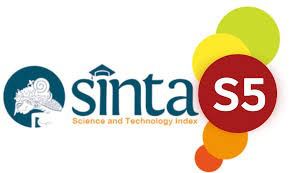Revitalization of Traditional Knowledge in Natural Resource Management: An Ethnobotanical Study in the Dayak Kenyah Indigenous Community
Abstract
Keywords
Full Text:
PDFReferences
Alemu, M., Asfaw, Z., Lulekal, E., Warkineh, B., Debella, A., Sisay, B., & Debebe, E. (2024). Ethnobotanical study of traditional medicinal plants used by the local people in Habru District, North Wollo Zone, Ethiopia. Journal of Ethnobiology and Ethnomedicine, 20(1), 4.
APIK Indonesia Network. (2024, July 25). FAO: 2021-2022 Indonesia experiences a decrease in deforestation, activists: the number does not mean much. https://apiki.or.id/fao-2021-2022-indonesia-alami-penurunan-deforestasi-aktivis-angka-itu-tidak-berarti-banyak/. Accessed on April 12, 2025.
Das, A., Gujre, N., Devi, R. J., & Mitra, S. (2021). A review on traditional ecological knowledge and its role in natural resources management: North East India, a cultural paradise. Environmental management, 1-22.
Dean, M. (2024). Exploring ethnobotanical knowledge: Qualitative insights into the therapeutic potential of medicinal plants. Golden Ratio of Data in Summary, 4(2), 154-166.
Ens, E., Reyes-García, V., Asselin, H., Hsu, M., Reimerson, E., Reihana, K., ... & Adams, M. (2021). Recognition of indigenous ecological knowledge systems in conservation and their role to narrow the knowledge-implementation gap. Closing the knowledge-implementation gap in conservation science: Interdisciplinary evidence transfer across sectors and spatiotemporal scales, 109-139.
Espree-Conaway, D. A. (2022). Evolutionary Cartographies of Language Diversification: Quantitative Approaches to the Geolinguistic Mapping of the Kayanic Languages (Central Borneo) (Master's thesis, The University of North Dakota).
Hafizi, A., Rahmadi, A., & Ulfah, D. (2022). Ethnobotany of medicinal plants by the Dayak Meratus community in Halong District, Balangan Regency, South Kalimantan Province. Jurnal Sylva Scienteae, 5(1). https://doi.org/10.20527/jss.v5i1.5041
John, O. D., Surugau, N., Kansedo, J., Panchal, S. K., & Brown, L. (2025). Plant-Based Functional Foods from Borneo. Nutrients, 17(2), 200.
Kumar, A., Kumar, S., Komal, Ramchiary, N., & Singh, P. (2021). Role of traditional ethnobotanical knowledge and indigenous communities in achieving sustainable development goals. Sustainability, 13(6), 3062.
Mardero, S., Schmook, B., Calmé, S., White, R. M., Chang, J. C. J., Casanova, G., & Castelar, J. (2023). Traditional knowledge for climate change adaptation in Mesoamerica: a systematic review. Social sciences & humanities open, 7(1), 100473.
Palaschuk, N., Gauthier, J., & Bullock, R. (2024). Developing community-based criteria for sustaining non-timber forest products: A case study with the Missanabie Cree First Nation. Forest Policy and Economics, 158, 103104.
Rani, J., Gulia, V., Sangwan, A., Dhull, S. S., & Mandzhieva, S. (2025). Synergies of Traditional Ecological Knowledge in Biodiversity Conservation: A Paradigm for Sustainable Food Security. In Ecologically Mediated Development: Promoting Biodiversity Conservation and Food Security (pp. 27-49). Singapore: Springer Nature Singapore.
Sinthumule, N. I. (2023). Traditional ecological knowledge and its role in biodiversity conservation: a systematic review. Frontiers in Environmental Science, 11, 1164900.
Suswandari, S., Armiyati, L., & Azid, N. (2022). Local wisdom of Dayak ethnic groups in Central Kalimantan, Indonesia. ETNOSIA: Jurnal Ethnografi Indonesia, 7(1), 67-85.
Syamswisna, S., & Sepsamli, L. (2022). Exploration of useful plants as medicine by the Dayak Kanayatn tribe in Tapakng Village, West Kalimantan. Variable, 5(1). http://dx.doi.org/10.26737/var.v5i1.3204
Yang, N., Zang, X., & Chen, C. (2022). Inheritance patterns under cultural ecology theory for the sustainable development of traditional handicrafts. Sustainability, 14(22), 14719.
Zahroh, U. A. Z., & Najicha, F. U. (2022). Problems and challenges on environmental law enforcement in Indonesia: AMDAL in the context of administrative law. Indonesian State Law Review, 5(2), 53-66.
DOI: https://doi.org/10.46336/ijeer.v5i2.937
Refbacks
- There are currently no refbacks.
Copyright (c) 2025 Riza Ibrahim, Dhika Surya
Published By:
IJEER: Jalan Riung Ampuh No. 3, Riung Bandung, Kota Bandung 40295, Jawa Barat, Indonesia
IJEER Indexed By:
 This work is licensed under a Creative Commons Attribution 4.0 International License.
This work is licensed under a Creative Commons Attribution 4.0 International License.









